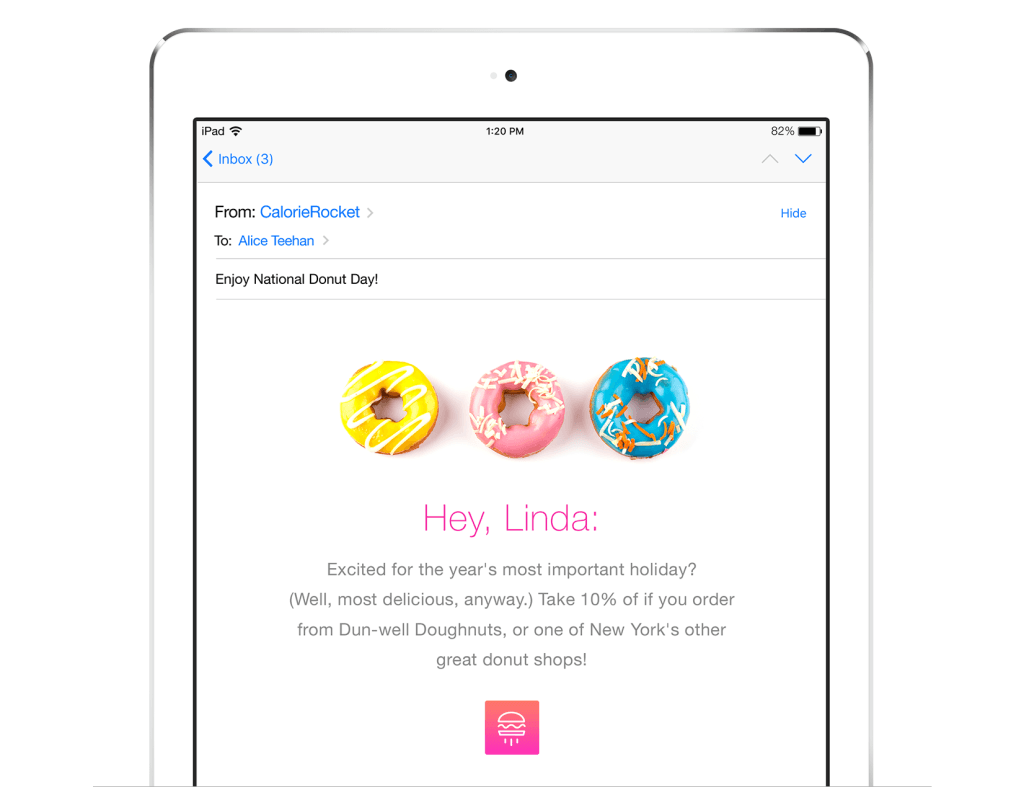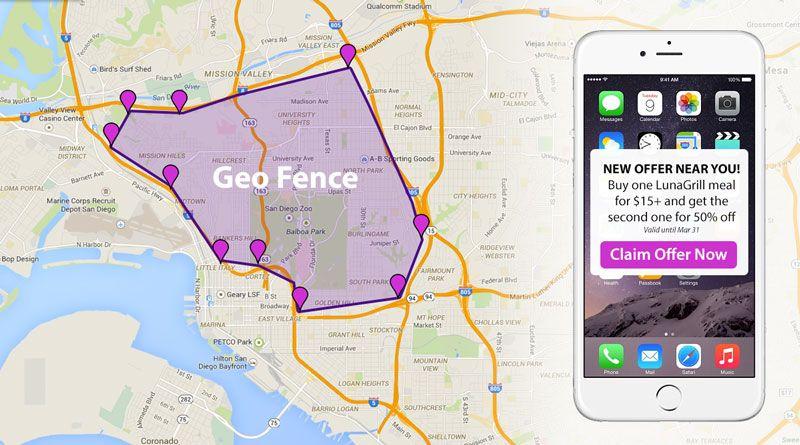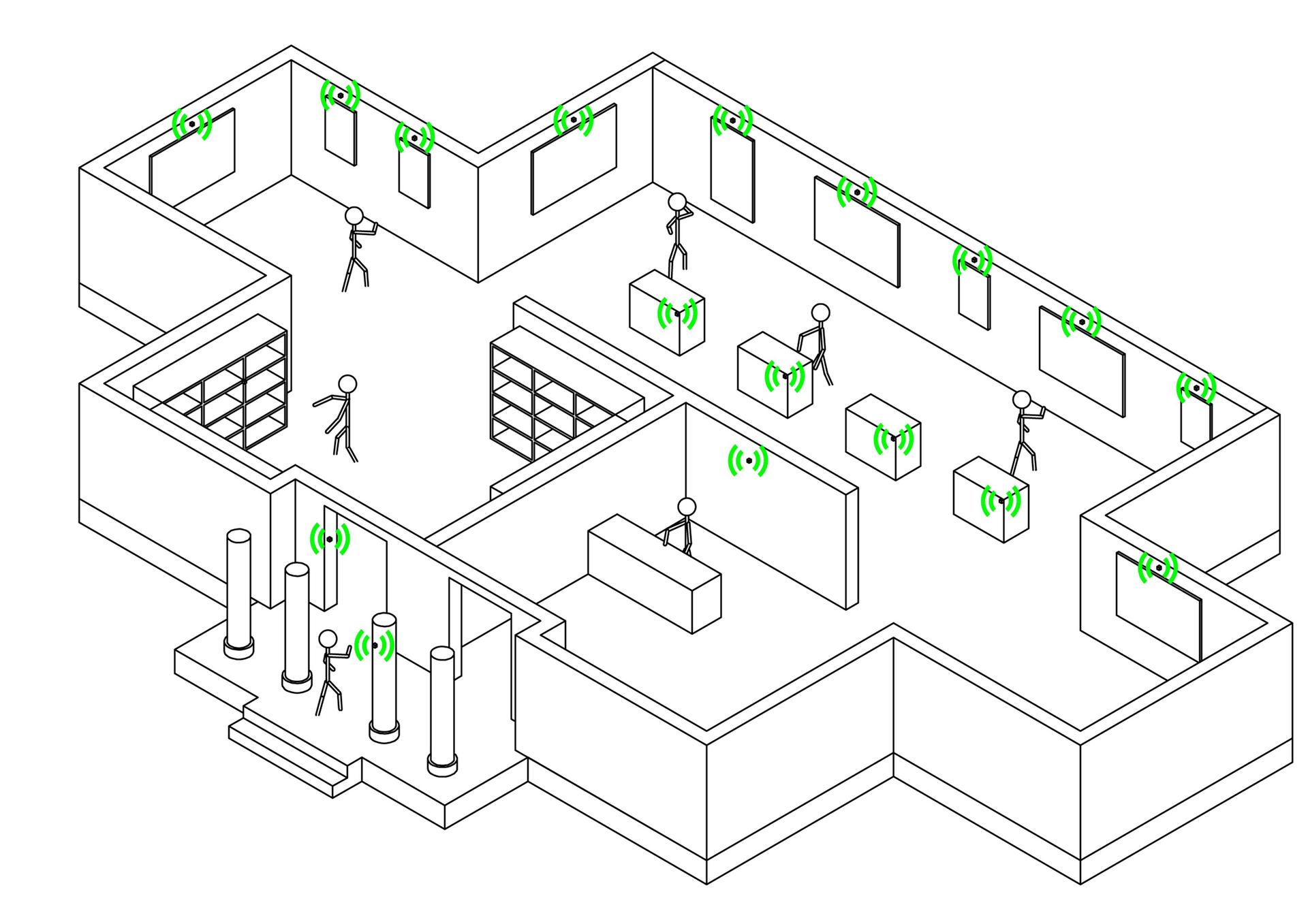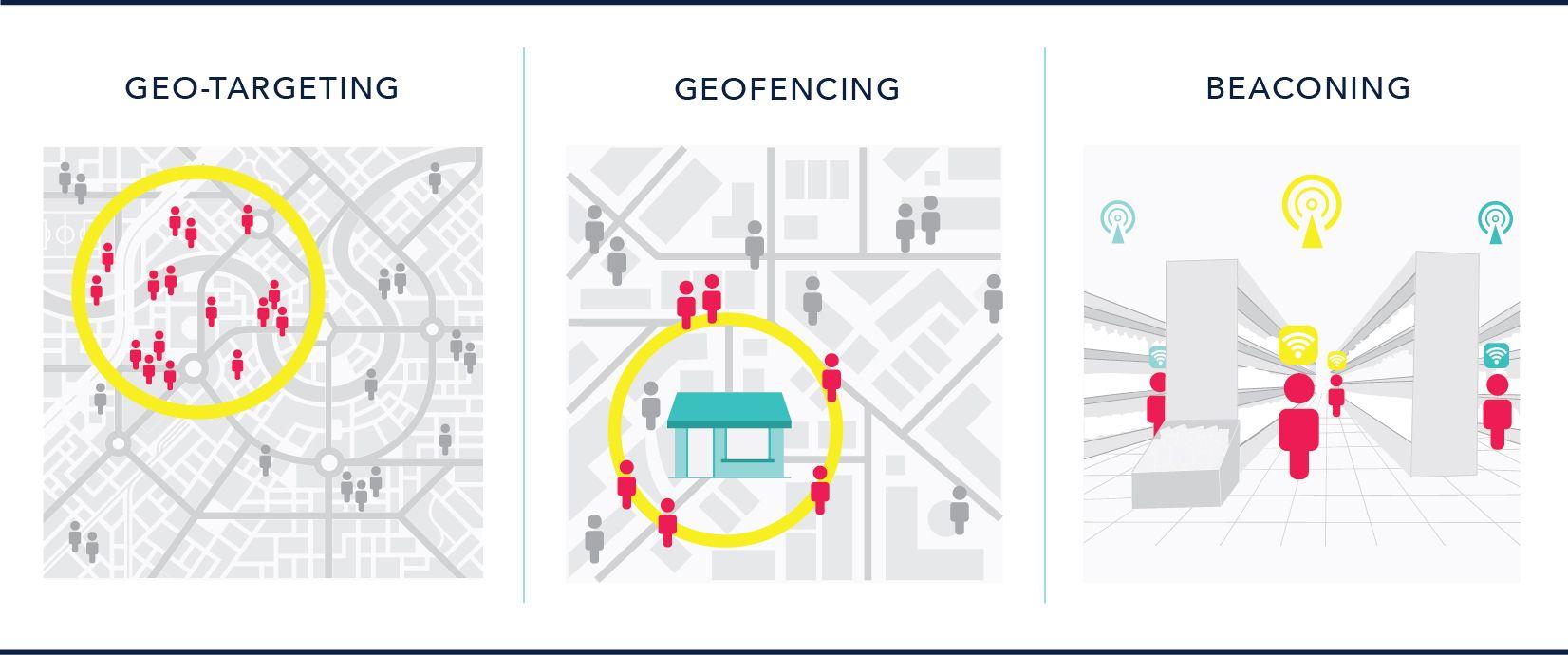Location Marketing: When to Choose Geofencing, Geo-Targeting, or Beaconing Services
Published on August 04, 2016/Last edited on August 04, 2016/8 min read


Team Braze
Dear reader: This blog post is vintage Appboy. We invite you to enjoy the wisdom of our former selves—and then for more information, check out our new Cross-Channel Engagement Difference Report.
Sometimes even the most savvy among us can feel like a confused great-granny on a MacBook Pro running Linux when it comes to the newest, latest tech, and how it actually works. Location-based marketing is already happening. All of the available tools provide opportunities to serve highly localized, highly relevant communications to your customers, based on where they are right now. But what exactly are those options, and how do they work?
Here’s a primer on today’s location-based marketing landscape.
It’s worth mentioning that some of these terms are still evolving, and their use is still being defined. For example, geo-targeting is often used synonymously with location targeting, for now, but that could change. Terms and meaning might shift over time as the technology and its uses evolve. But, like geo-targeting, we’ve got you covered right here, right now.
Location-based targeting terms to know
Geo-targeting
Geo-targeting (sometimes spelled geotargeting or geo targeting) involves detecting a user’s location, and serving them communications based on that location. Those communications might be ads or other content, like an email or geo-targeted push notification. Geo-targeted communications are delivered most commonly through text or push, and might also come when you open a certain app or social media site. The benefit of geo-targeting services are simple: enhanced personalization.
Geo-targeted content can be paired with data about user preferences and activities to really hone in on specific groups of people, and also exclude groups of people you don’t intend to target. Geo-targeting allows you to target a user wherever their device goes.

How does geo-targeting work?
Geo-targeting in the most traditional sense uses IP addresses to figure out where users are. Every internet-connected device has a unique IP. It’s like an address for your computer, tablet, phone, or wearable. The first three digits provide a country code. The digits after that indicate specific areas within a country, down to state, city, and postal code. To learn more about the tech behind geo-targeting, geoedge.com is a good source.
How you’re already experiencing geo-targeting
Any time you get a Facebook ad for, say, a nail salon down the street, and not a nail salon in Timbuktu (unless, of course, you live in Timbuktu), it’s because Facebook’s ad servers know you live in relative proximity to the business being advertised.
Geofencing
Geofencing hinges on the use of a “fence”—a designated area that a marketer sets. Where geo-targeting allows you to get more granular and include or exclude certain users in the target area (based on demographic, for instance), geofencing is a bit more of a blunt object in that you’ll capture all users who move into a certain area. The purpose of creating a geofence is to target communications in a given zone, in a given context—just like geo-targeting, but with greater accuracy. Retail operators who want to catch the attention of shoppers as they pass by a store, for example, might use geofencing.

Source: SynergyWorld.com
How does geofencing work?
Geofencing mostly uses GPS technology (which communicates with the tiny chip in your phone) to cordon off an area with a virtual fence. When a device moves into (or out of) the space defined by the fence, triggers are sent, and the user will receive a notification, for example a text or push notification (provided they are opted into those channels).
How you’re already experiencing geofencing
If you have and use a smartphone, it’s possible for you to set location-based reminders for yourself, right now. You can, for example, tell your phone to alert you when you’re within range of the frame shop, so that new piece of art doesn’t become a six-month fixture in your trunk. Or, if you’ve attended a concert lately, and the band sends you a push notification to buy some gear while you’re in the venue, they’ve likely used geofencing.
Beacons
Beacons are little physical objects (under two square inches, in most cases) that can be placed in desired locations. Their sole purpose is to detect you, or more specifically, your device, as you move into their range. The beacons themselves don’t send content. Like geofencing, a signal is triggered when you’re near one, and a server sends a push, text, in-app message, or even an email (though currently, that’s a less likely application for beacons).
Beacons are sometimes referred to as BLEs, for Bluetooth Low Energy, which is what fans of this technology like about it. The low energy bit means the batteries in a beacon will last for a long time. The blueooth bit means that beacons can work well for marketing even in areas with no WiFi or spotty cell service.
Bluetooth tech is low cost, and accessible to anyone with a smartphone, but it requires the user to have bluetooth turned on.
Beacons aren’t designed to know you’re you, where you were a moment ago, or where you’re going next. By and large, they’re just little stationary computers that react: when your device moves near the beacon itself, it triggers a ping, and your app—if you have an app with notifications enabled for the beacon’s particular location—goes to work communicating with you. When you move out of that beacon’s range, it’s basically a done deal.

Source: RFproximity
How do beacons work?
Bluetooth technology is less expensive than GPS and WiFi. However, while bluetooth makes beacons great, it’s also their downside, as many folks keep bluetooth turned off when they’re moving around in the world. To understand the tech in greater detail, Estimote, a beacon vendor, does a good job of explaining the physics and math of how beacons work.
How you’re already experiencing beacons
You may or may not have experienced beacons. There are several layers of permissions required. You’d need to already have a store’s app (or concert venue’s app, or…), accepted their location services, opted in for their notifications, and be walking around with bluetooth on.
When to use geo-targeting vs. geofencing vs. beaconing
Geo-targetingGeofencingBeaconingBest used to reach users who: live or move about in a certain area, for whom you have other data like preferences or demographic infoBest used to find users who: are nearby your store, venue, or service; users who are in your parking lot, or entering a mall, for exampleBest used to reach users who: are in a certain aisle of your store; who are on a certain bus or train; who are moving through a space like a museumUsers within a broad general range (within a zip code, for example)Captures users within a 50 meter or so range Captures users in a specific location or range (can determine almost to the inch of where you’re standing)Can incorporate other preferences to narrow users down for greater specificityIs more of a blunt object: other user preferences cannot be paired Other user preferences cannot be incorporatedRelies most heavily on IP addressRelies most heavily on GPS (and WiFi, to some degree)Relies most heavily on bluetooth technologyLocation accuracy is not as important when using geo-targeting, as other preferences refine your segmentEx: Only people [in this town] who are [women], [over 50], who like [healthy stuff].Offers some accuracy, though will likely capture users who are just passing through an area, in addition to folks who have come to a location purposefully (can be a plus or a minus, depending on your campaign)Ex: All of the people who walk by your organic health barBeacons are highly specific, to the point that they can tell when users in a retail space go upstairs or downstairs or enter a certain aisleEx: Anyone in your organic health bar who lingers in front of the matcha for 10 seconds or more.

Location-based targeting, privacy, and your relationships with your users
You can’t discuss location-based marketing without discussing privacy.
Privacy and security concerns are, by many accounts, the one thing holding location based services back from exploding. One of the first backlashes came from Nordstrom customers, when that retailer tracked customers through its physical locations for market research purposes. The word “creepy” was applied at the time, and it’s still a word commonly found in discussions of how location-based marketing can tend to make people feel.
There are lots of questions, as yet unanswered. For example, when considering anonymity, is it okay if trackers gather data, but aren’t able to discern exactly who a user is? There are questions of security and privacy, and information one company might share with another. There are questions of choice: should customers always have to opt-in, or can opt-outs work, too? There are questions about who can and can’t be trusted with these services: your company, for example, versus, say, the U.S. government.
The answers remain to be seen, but there’s one no brainer in all of this; one best practice that can dictate any brand’s choices around location-based marketing: ask your users. Explain why you want to target them, tell them how you plan to use their data, and make some commitments about how you won’t use it. Ask for feedback via quick polls, or consider doing some market research on your audience. See what your users most want. Then respect that.
Releated Content
View the Blog
The new inbox reality: How iOS changes are reshaping email marketing

Aparna Prasad

Experience optimization: Turning data insights into better journeys

Team Braze

December 2025 Bonfire Marketer of the Month: Jagex’s Emma Oliver
